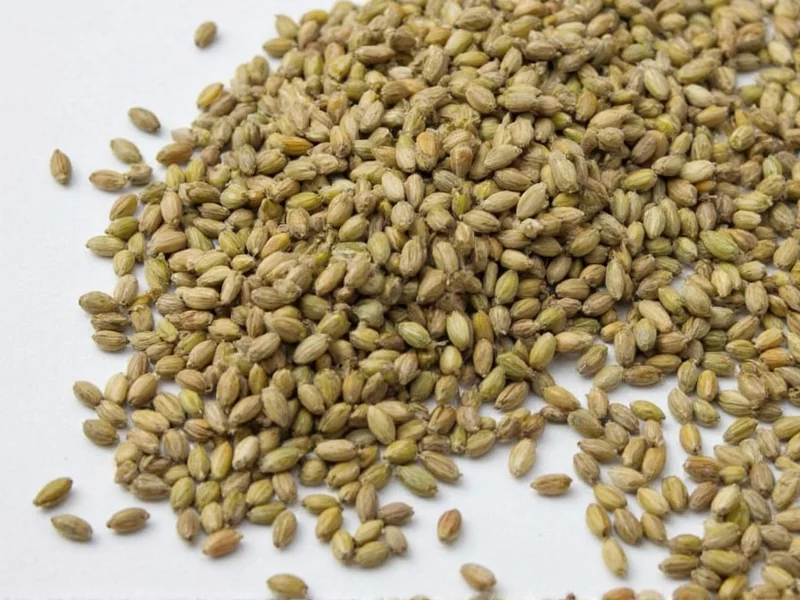Understanding how to use coriander seeds properly transforms ordinary dishes into culinary masterpieces. These small, round seeds from the Coriandrum sativum plant deliver a distinctive citrusy, slightly sweet flavor with warm, nutty undertones when prepared correctly. Unlike their leafy counterpart (cilantro), coriander seeds maintain their flavor profile through cooking, making them indispensable in global cuisines from Indian curries to Scandinavian breads.
Essential Preparation Methods for Maximum Flavor
Raw coriander seeds have a mild, somewhat grassy flavor. Proper preparation unlocks their complex aromatic compounds. The three most effective techniques include:
| Preparation Method | Process | Best Applications |
|---|---|---|
| Dry Toasting | Heat seeds in dry skillet over medium heat 2-3 minutes until fragrant | Curry pastes, spice blends, rice dishes |
| Wet Toasting | Toast seeds with small amount of oil or ghee | Indian tadka tempering, stir-fries |
| Raw Incorporation | Use whole seeds without toasting | Pickling brines, bread doughs, sausages |
Mastering Coriander Seed Grinding Techniques
How to grind coriander seeds properly affects both flavor intensity and texture. For how to toast coriander seeds for maximum flavor, follow these professional techniques:
After toasting, allow seeds to cool completely before grinding. Use a dedicated spice grinder for finest powder, or a mortar and pestle for more control. For curry pastes, combine toasted seeds with other spices and a small amount of liquid (water, vinegar, or citrus juice) to create a smooth paste that evenly distributes flavor throughout the dish. When making dry spice blends like garam masala or berbere, grind seeds separately first, then mix with other ground spices to ensure consistent particle size.
Culinary Applications Across Global Cuisines
Understanding coriander seeds in Indian cooking recipes reveals their foundational role. In Indian cuisine, coriander seeds form the base of virtually all curry powders and masalas. Combine with cumin, turmeric, and mustard seeds for authentic tadka (tempering) techniques. For South Indian sambar powder, dry roast coriander seeds with lentils and dried chilies before grinding.
Middle Eastern cooking utilizes coriander seeds in za'atar blends and baharat spice mixes. Add whole seeds to pickled vegetables for complex flavor development. In Mexican cuisine, coriander seeds enhance mole sauces and adobo rubs, balancing heat from chilies. European bakers incorporate ground coriander into rye breads, ginger cookies, and fruit compotes for subtle warmth without overpowering other flavors.
Precision Measurements and Substitutions
When working with coriander seeds vs ground coriander differences, remember that freshly ground seeds provide significantly more vibrant flavor than pre-ground spice. Use this conversion guide for accurate results:
- 1 teaspoon whole coriander seeds = ¾ teaspoon freshly ground coriander
- Substitute: 1 teaspoon ground coriander = 1¼ teaspoons whole seeds (toasted and ground)
- Flavor intensity doubles when seeds are toasted before grinding
For baking applications requiring using coriander seeds in baking applications, use whole seeds in bread doughs (¼-½ teaspoon per loaf) or grind finely for cakes and cookies. In savory baking like crackers or cheese straws, combine with black pepper and sea salt for sophisticated flavor.
Optimal Storage Practices for Longevity
Preserve flavor with proper storage techniques for how to store coriander seeds for freshness. Keep whole seeds in an airtight glass container away from heat and light. Properly stored, they maintain peak flavor for 12-18 months compared to just 6 months for pre-ground coriander. For extended storage, place containers in the freezer where they'll retain quality for up to 2 years. Never store near the stove or in clear containers exposed to sunlight, as both accelerate flavor degradation.
Avoiding Common Coriander Seed Mistakes
Many home cooks make critical errors when using coriander seeds. Avoid these pitfalls:
- Over-toasting: Seeds burn quickly; remove from heat when they release aroma
- Improper grinding: Over-processing creates bitter, oily paste rather than fine powder
- Adding too early: In long-cooked dishes, add ground coriander in last 15 minutes to preserve volatile oils
- Incorrect substitutions: Cumin has earthier flavor; fennel offers licorice notes—neither adequately replaces coriander's citrus profile
Health Benefits Supported by Research
While primarily used for flavor, coriander seeds offer documented health properties relevant to coriander seeds health benefits and uses. Studies show they contain antioxidants like linalool and pinene that may support digestive health. Research published in the Journal of Ethnopharmacology indicates potential blood sugar regulation properties. The dietary fiber content aids digestion, while antimicrobial compounds may support food safety in preservation applications like pickling.











 浙公网安备
33010002000092号
浙公网安备
33010002000092号 浙B2-20120091-4
浙B2-20120091-4